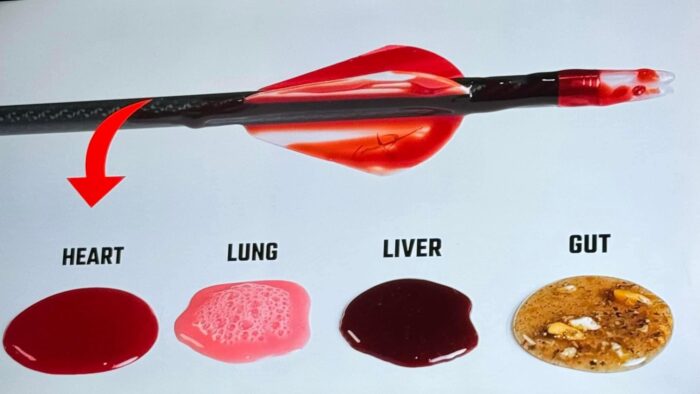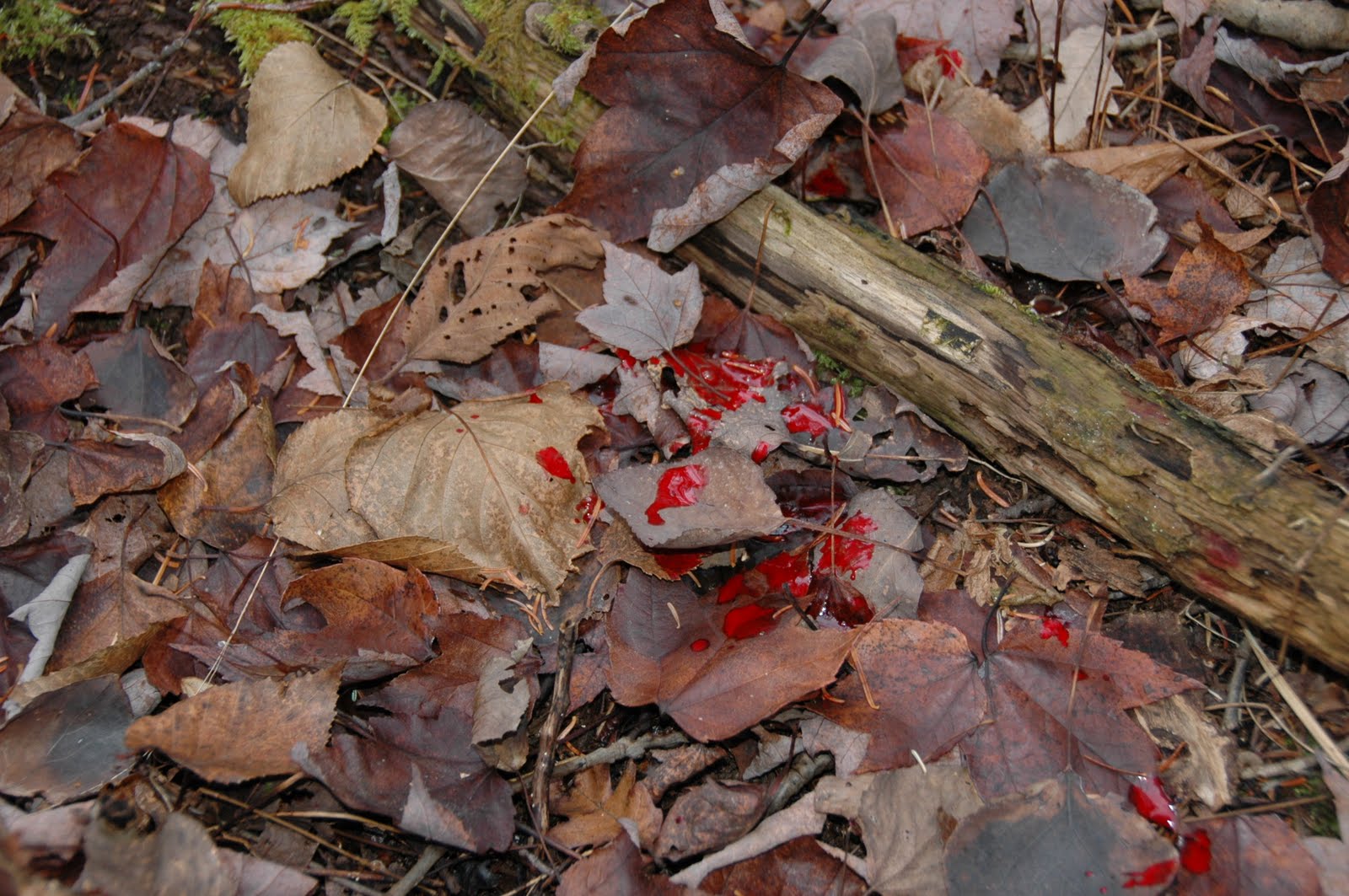Blood trailing is an important part of the hunt. Big Game hunters need to be able to track a wounded critter. The color, location, and amount of the animal’s blood has a story to tell.
Blood Trailing is an exciting part of the Big Game hunt. After the shot, the critter will respond and move. If there are several critters, signs are everywhere but the blood should be from just the targeted critter.
Color A lung shot will have a Brite red, oxygenated, color. Archers need to find their arrow. This will tell the tale. I use a small band of reflector tape between the nock and fletching’s, if I need to look for the arrow at night. Close examination of the blood on the shaft will be of the color where the arrow passed through.
Location When tracking blood, if the blood is high on grass or branches, the wound is high. If the blood is just on one side, there may not be an exit wound.
Amount A lot of blood means a large artery or vein was hit. A heart shot will also produce volumes of blood.
Hair Belly hair, shoulder, or body hair have different colors and sizes. Look for hair to see where the critter was hit.

The best advice I have learned about where to shoot a Big Game critter is to “AIM FOR THE EXIT!” A good hunter knows the anatomy of their targets. Your best and biggest target are the huge lungs. Aim so the arrow or bullet will enter and exit through the lungs. This will cause 2 bleeding points.
Some hunters want to put the critter down, so they aim for the shoulder. This may not kill the animal but can slow or knock them down. A second shot is often needed.
Aiming at the head or heart is a small target. If you make the shot, the critter will often drop quickly, but misses are common.
Not every shot is perfect. Once you have hit a critter, you have the obligation to pursue it. Wait at least 30 minutes. After the shot, mark the last place that you saw the animal. When you shot, did the critter flinch, buck, hunch, or…? This behavior will help decide where you hit the animal.
Shoot within your practiced comfort zone. Not everyone is a super sniper or has the best gear for long shots. Use the best weapon you have that is right for the game.
To make a one shot kill, you need to shoot dozens of practice shots. Know your equipment and know your limits.
When you find blood, begin the tracking. Stay to one side of the trail. Use flagging tape to line the trail. This will help determine a direction. Generally, wounded animals will move downhill and toward water. Thick cover, ditches, and hedgerows are good places to search.
If you lose the trail, begin circling until you find the next blood. If you are aware of a trail, dirt road, or stream, you can often find a crossing point.
If the tracking is hard, recruit some experienced friends to help and teach you the art. With patience and persistence, you can often solve the mystery. You may not find the critter, but you will learn to take a better shot.
Shoot better to Bleed better!
Montana Grant




